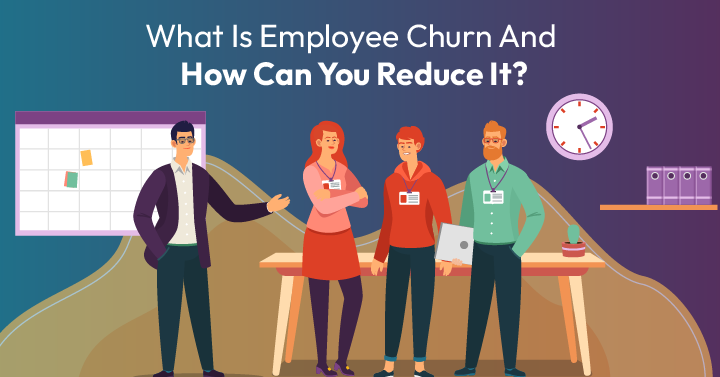
1. What is peer learning in the workplace?
Peer to peer learning in the workplace is a two-way reciprocal learning activity. It involves people sharing their knowledge, ideas and experience with each other, and is therefore considered mutually beneficial to the participants.There are a broad sweep of activities that come under peer to peer learning, which include seniors tutoring junior hires, and learning pods where people at the same seniority level partner up to help each other learn a new skill, be it a technical or soft skill. The peers can form discussion groups, start topic threads, or collaborate on a project that uses these skills.The people who benefit the most from workplace peer learning, are those who seek to broaden their learning beyond their principal strengths.The reason peer learning works, is attributed to the willingness and comfort people have in taking inputs from someone who is knowledgeable without seeming intimidating or distant. The participants feel more confident about raising questions on what is discussed or supply the discussion with their own insights.When introduced informally, but systematically, peer learning gets employees to unlearn, and relearn. Meaning, that they avail opportunities to absorb new information of their own free will. More importantly, if they are the ones teaching someone, they are more likely to remember the lessons themselves, as they are more engaged and involved in the process.There has been a growing interest in peer-assisted learning, and in the next section we’ll go into the strategies for effective peer to peer learning programs in the company. 2. A guide to peer-to-peer learning
2. A guide to peer-to-peer learning
If you’re planning on initiating and implementing a peer to peer learning program at work, there are a few things you should know. First, you should do a skills inventory and identify the different levels, criticality and number of people possessing such skills. Next, identify roles that will evolve or grow to need these skills down the line, and the current performance of those employees in such roles. The third step is to cluster people who share similar interests and are ideally predecessors and successors to the role you’re looking to place them in, in the future. The final step, is to encourage these focus groups to devise strategies collectively for peer learning.Here’s the guideline to bear in mind to ensure your efforts are seeing results;2.1. Prioritize the purpose
The purpose of peer support is to keep learning educational, interesting and dynamic. Check in with participants intended to be in a peer-to-peer learning environment. Find out what their interests are, either via email, in-person talks or over call. Collect all possible inputs and create a conversation starter by assigning a topic to each group within the network. People appreciate being asked for their opinion and being given a platform to ask and get answers.2.2 Form a peer evaluation committee
Identify a mixed age group and form an informal advisory committee that comprises a facilitator, moderator and administrators who can help the network stay focused and on track. They can brainstorm for topics, and set goals and learning outcomes.2.3 Encourage diverse perspectives
Once the peer to peer learning in the workplace is in place, ensure that no one is benched on the sidelines. Different perspectives clue you in on what a person’s interpretation of the topic under discussion. It helps people to open up and to overcome hesitation.2.4 Pool in recommended resources
Like a book club, encourage the peer support group to pool in their resources and form a mini knowledge centre. These resources can be physical or digital content, in the form of books, case studies, white papers, statistics, links, presentations, webinars or even podcasts by motivational speakers and leaders.2.5 Alternate focus groups
Every once in a while, rotate members around groups to mix things up. They can not only learn something new but can also meet someone new from a different department or role. The knowledge base for peer to peer learning increases in both quantity and quality of material with each passing interaction. The criteria for mixing up groups should be to ensure that each members doesn’t learn the same thing twice.2.6 Leverage social learning
Over 3.6 billion people in the world use social media, making it the number 1 hub for contextualized conversations. Links to relevant articles, and value-added content are enabling people to self-learn as well as pass on information found to their peers. The advantage of social learning is that it is dynamic and engaging without seeming to be labor intensive. So long as you have an internet plan, you can even opt for alerts for your favorite topics and see new threads as and when someone asks a question, or responds to an existing one!2.7 Examine classroom environment
The right environment, whether physical or virtual can ease people into the idea of peer to peer learning in the workplace. When collocated, workers know the layout of the office and can arrange for sessions by booking classrooms or conference halls for certain times. Virtually, you can recreate the same via breakout rooms on Zoom, and set a timer for icebreaking and talking points. The housekeeping rules of having your audio and camera on, checking your internet, firewall and secure access settings should be followed by all.2.8 Appoint a facilitator
A facilitator is the primary administrator of the learning support group. He, or she is a figure who is experienced in delegation and soft skills, such as communication, strategic advisory, mediation and conflict resolution. A facilitator works closely with group moderators to ensure topics are vetted out, relevant to learning outcomes, and contain exercises and activities to ensure all participants are thoroughly invested in the process.2.9 Dive into history and personal experience
The best lessons are the ones that are relatable and human. Encourage peers to share their work experiences in the form of anecdotes amongst the group that they are in. It establishes trust, and the connection required to convey information in a simple, understandable manner. It also flips roles, and lets junior employees see the journey up the organization made by those who have been around longer. Quite like walking a mile in someone else’s shoes.2.10 Draw from competitor analysis
Businesses are always eyeing the competition in order to know what they’re doing right, or differently. Encourage peers within the support group to do their research before and after sessions and pool in insights on competitors as part of the market knowledge you would want them to have. It helps everyone understand what success means to different businesses. Consequently you can expand your performance indicators to include the learnings from competitor analysis.2.11 Distribute case studies to participants
Real world case studies help students (in this case, the employees), see where what they’ve learned works in the practical world. Be it how a company fixed inefficiencies, created new processes to replace outdated ones or captured the interest of a profitable market, support the learning journey with ample evidence of the lessons you’re trying to pass on.2.12 Collect discussion feedback
At the end of the peer to peer learning program, collect feedback on participant experiences. Include questions on their opinion on topic delivery, and provision for ratings at the end. This helps you as a company understand the extent of success of your program and lets you decide if it's something that your workforce wants and needs. 3. Why is peer learning important?
3. Why is peer learning important?
Peer learning benefits include;Team building
Peer learning happens with members teams are already familiar with, so there is no pressure or forced interactions. This type of training motivates people to get help from their peers. It transfers skills from knowledgeable and competent team members.Personal development
It improves the proficiency and confidence of everyone involved, i.e. both the teacher, and pupil. People are more likely to accept information if it comes from others who are on or near the same seniority level as they are. They are open and curious to learn without the fear of being ridiculed, or overlooked because the person they are speaking with would have been in a similar situation and therefore, in a better position to understand concerns.Cost-effective and easily arranged
Since it happens internally, and quite often unconsciously, peer learning is easy to set up without requesting for additional funding. Besides, you don’t need to institute a formal approval and sign off process. It's just a question of confirming yours, and everyone else’s availability to proceed.Knowledge sharing
The composition of the multigenerational workforce may mean more baby boomers exiting to make way for Generation Z workers. But this also means that there’s a historic element to the learning, with the facility to compare how things were done decades ago, and now. Peer learning gives you knowledge on management practices and helps people cultivate the soft skills that assisted people in senior roles.Training at-scale
Peer to peer training can help upscale your efforts without hiring trainers for each and everything. Companies can tap into a global talent pool for perspectives and contextual knowledge.
 Interested in Virtual Team Building Events?
Interested in Virtual Team Building Events?



 2. A guide to peer-to-peer learning
2. A guide to peer-to-peer learning 3. Why is peer learning important?
3. Why is peer learning important?
















